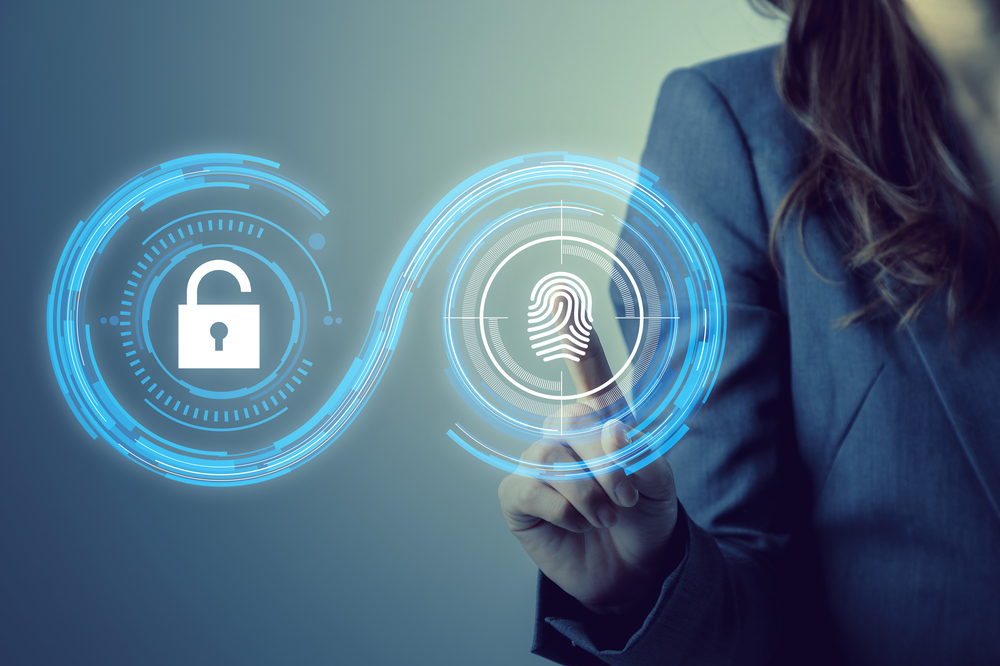In an increasingly digital world, the need for robust security measures to protect sensitive information and secure access to digital assets has never been more critical. Traditional methods of authentication, such as passwords and PINs, are susceptible to various vulnerabilities, including phishing attacks, brute-force hacking, and user error. In response to these challenges, biometric authentication has emerged as a highly effective and convenient solution for verifying individual identity based on unique physiological or behavioral traits.
Understanding Biometric Authentication
• The process of biometric authentication typically involves capturing biometric data using specialized sensors or cameras, extracting relevant features from the data, and comparing these features against stored templates in a database. If the biometric features match those of a registered user within an acceptable tolerance threshold, access is granted.
• Physiological and behavioral are the two primary categories into which biometric data may be divided. Physiological biometrics include features such as fingerprints, facial characteristics, iris patterns, and DNA. Behavioral biometrics, on the other hand, capture unique patterns of behavior, such as typing rhythm, gait analysis, and voice modulation.

Advantages of Biometric Authentication
Compared to conventional authentication techniques, biometric authentication has the following significant advantages:
1. Enhanced Security: Biometric traits are inherently unique to each individual and difficult to replicate, making them highly secure for identity verification. Unlike passwords or PINs, which can be stolen, forgotten, or shared, biometric data is tied directly to the individual and cannot be easily compromised.
2. Convenience: Biometric authentication is convenient and user-friendly, so you don’t have to remember complex passwords or carry physical IDs.With biometrics, users can access their devices or accounts with a simple touch, glance, or voice command, streamlining the authentication process and enhancing user experience.
3. Accuracy: Biometric systems offer high levels of accuracy in identifying individuals, minimizing the risk of false positives or false negatives. Advanced algorithms and sensor technologies ensure reliable authentication even in diverse environmental conditions or with subtle variations in biometric data.
4. Resistance to Fraud: Biometric authentication is resistant to fraud techniques such as phishing, social engineering, or brute-force attacks. Since biometric traits are intrinsic to the individual, they cannot be easily stolen, guessed, or intercepted by malicious actors.
5. Scalability: Biometric authentication systems are scalable and adaptable to various use cases and deployment scenarios. Whether used for securing smartphones, accessing secure facilities, or verifying identities in banking transactions, biometrics can be tailored to meet the specific needs of different applications.
Applications of Biometric Authentication
Biometric authentication has diverse applications across industries and sectors, including:
1. Mobile Devices: Smartphones and tablets equipped with fingerprint scanners, facial recognition, or iris scanners use biometric authentication to secure access to sensitive data and applications.
2. Physical Access Control: Biometric systems are widely used for controlling access to secure facilities, such as office buildings, government agencies, and data centers, replacing traditional keycard or PIN-based systems.
3. Financial Services: Banks and financial institutions use biometric authentication to verify customer identities for online banking, ATM transactions, and mobile payments, enhancing security and preventing fraud.
4. Healthcare: Biometric authentication is used in healthcare settings to secure electronic health records (EHRs), control access to medical devices, and verify patient identities during clinical encounters.
5. Border Control and Immigration: Biometric technologies such as facial recognition and iris scanning are employed at border checkpoints and immigration control points to verify travelers’ identities and enhance border security.
Challenges and Considerations
While biometric authentication offers numerous benefits, it also poses certain challenges and considerations:
1. Privacy Concerns: Collecting and storing biometric data raises privacy concerns related to data protection, consent, and potential misuse. Safeguarding biometric information against unauthorized access or misuse is essential to maintaining user trust and compliance with privacy regulations.
2. Accuracy and Reliability: Biometric systems may exhibit variations in accuracy and reliability depending on factors such as sensor quality, environmental conditions, and individual characteristics. Ensuring robust performance across diverse use cases and user populations is critical to maintaining trust in biometric authentication.
3. Security Vulnerabilities: Biometric systems are not immune to security vulnerabilities, including spoofing attacks, presentation attacks, and data breaches. Implementing robust anti-spoofing measures, encryption protocols, and secure authentication protocols is essential to mitigating these risks.
4. Interoperability and Standards: Lack of interoperability and standardized protocols can hinder the seamless integration of biometric systems with existing infrastructure and platforms. Developing open standards and interoperable solutions is essential to promoting broader adoption and compatibility of biometric technologies.
5. Ethical Considerations: Biometric authentication raises ethical considerations related to consent, autonomy, and discrimination. Addressing issues such as informed consent, data ownership, and algorithmic bias is essential to ensuring fair and equitable use of biometric technologies.
The Future of Biometric Authentication
• As biometric technology continues to evolve, the future holds tremendous promise for its widespread adoption and integration into various aspects of everyday life. Advancements in sensor technology, artificial intelligence, and biometric algorithms will further enhance the accuracy, reliability, and usability of biometric authentication systems.
• Additionally, emerging trends such as multimodal biometrics (combining multiple biometric modalities for enhanced security), continuous authentication (monitoring biometric traits in real-time for ongoing identity verification), and decentralized identity management (empowering users to control and manage their biometric data) are shaping the future of biometric authentication.
• Furthermore, the increasing convergence of biometrics with other emerging technologies such as blockchain, Internet of Things (IoT), and edge computing holds the potential to unlock new applications and use cases for biometric authentication, from securing smart homes and connected devices to enabling frictionless transactions and digital interactions.

Conclusion
Biometric authentication represents a paradigm shift in access control and identity verification, offering a highly secure, convenient, and reliable means of protecting digital assets and sensitive information. By harnessing the power of unique biological and behavioral traits, biometrics is paving the way for a safer, more seamless digital future, where individuals can authenticate their identity with a simple touch, glance, or voice command. Welcome to the future of secure access control—welcome to the era of biometric authentication.


